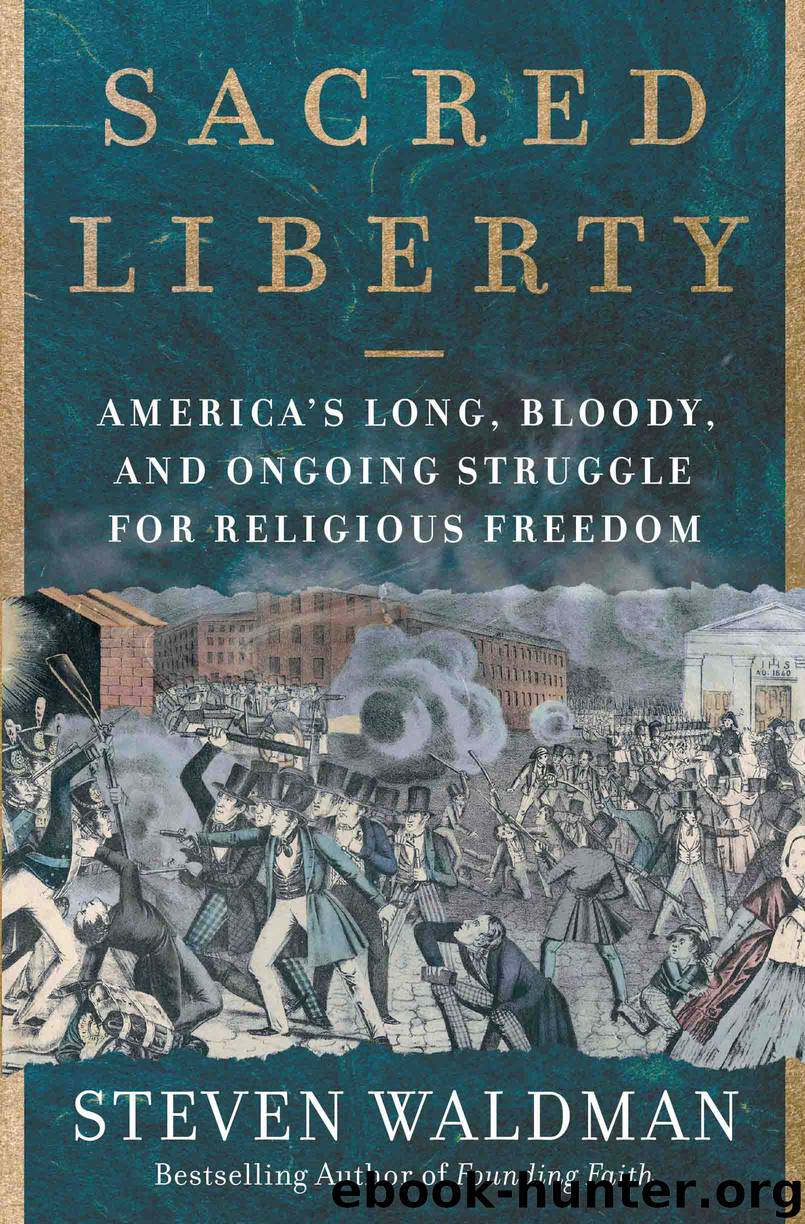Sacred Liberty by Steven Waldman

Author:Steven Waldman
Language: eng
Format: epub
Publisher: HarperCollins
Published: 2019-03-29T16:00:00+00:00
Chapter Fourteen
Political Bedfellows
The poison gets drained from the Protestant-Catholic relationship, in part because of the rise of the religious right.
Pope John Paul II and President Ronald Reagan, Fairbanks, Alaska, May 2, 1984. AP Photo / Scott Stewart.
During the 1960 presidential campaign, a group of Protestant ministers in Georgia put their names to an advertisement declaring that they could not vote for John F. Kennedy because he was Catholic. One of the signatories was Dr. Martin Luther King Sr.
“Daddy King,” the father of the civil rights leader, was like a lot of traditional Protestants, white and black. He viewed Catholics with suspicion or hostility. He changed his attitude in October 1960 after his son was imprisoned for eating at a segregated lunch counter in Atlanta, Georgia. Martin Jr.’s wife, Coretta, was terrified that he would be killed in jail. John F. Kennedy, the Democratic Party candidate, had been cautious on civil rights, but his advisor, Harris Wofford, convinced him that a simple phone call would make a huge difference. Kennedy told Coretta that he was thinking of them and wished them well.
Daddy King was impressed. On the night his son was released from jail, he explained, with jarring candor: “I had expected to vote against Senator Kennedy because of his religion. But now he can be my president, Catholic or whatever he is. It took courage to call my daughter-in-law at a time like this. He has the moral courage to stand up for what he knows is right. I’ve got all my votes and I’ve got a suitcase and I’m going to take them up there and dump them in his lap.” The campaign quietly distributed a pamphlet, known as “the Blue Bomb” because of the color of its paper, in African American communities to publicize the call.1 Kennedy won 68 percent of the black vote, a seven-point improvement over the previous Democratic nominee.2
Shortly before Election Day, Wofford was alone with Kennedy. The future president said, “Did you see what Martin’s father said? He was going to vote against me because I was a Catholic, but since I called his daughter-in-law, he will vote for me. That was a hell of a bigoted statement, wasn’t it? Imagine Martin Luther King having a bigot for a father!”3
Many American Protestants held Catholics in disdain for 350 years of America’s history. And then, suddenly, at least in terms of the long arc of history, this changed. Between roughly 1960 and 1990, the pace at which Catholics were accepted accelerated. This chapter attempts to explain why. We’re accustomed to thinking that religion shapes politics, but during this period, it worked in reverse. The exigencies of electoral coalition building helped pull down walls between religions. It happened first on the left, as the nomination of a Catholic Democrat, combined with the dynamics of the civil rights and anti-war movements, forged new Protestant-Catholic alliances. Then an even more dramatic (and less understood) reshuffling occurred among conservatives and religious traditionalists. The rise of the religious right led to more religious pluralism.
Download
This site does not store any files on its server. We only index and link to content provided by other sites. Please contact the content providers to delete copyright contents if any and email us, we'll remove relevant links or contents immediately.
The Secret History by Donna Tartt(16623)
The Social Justice Warrior Handbook by Lisa De Pasquale(11489)
Thirteen Reasons Why by Jay Asher(7788)
This Is How You Lose Her by Junot Diaz(5772)
Weapons of Math Destruction by Cathy O'Neil(5037)
Zero to One by Peter Thiel(4824)
The Myth of the Strong Leader by Archie Brown(4789)
Promise Me, Dad by Joe Biden(4447)
Beartown by Fredrik Backman(4418)
Stone's Rules by Roger Stone(4415)
How Democracies Die by Steven Levitsky & Daniel Ziblatt(4398)
The Fire Next Time by James Baldwin(4342)
100 Deadly Skills by Clint Emerson(4077)
A Higher Loyalty: Truth, Lies, and Leadership by James Comey(4032)
Rise and Kill First by Ronen Bergman(4012)
The David Icke Guide to the Global Conspiracy (and how to end it) by David Icke(3881)
The Farm by Tom Rob Smith(3872)
Secrecy World by Jake Bernstein(3782)
The Doomsday Machine by Daniel Ellsberg(3731)
